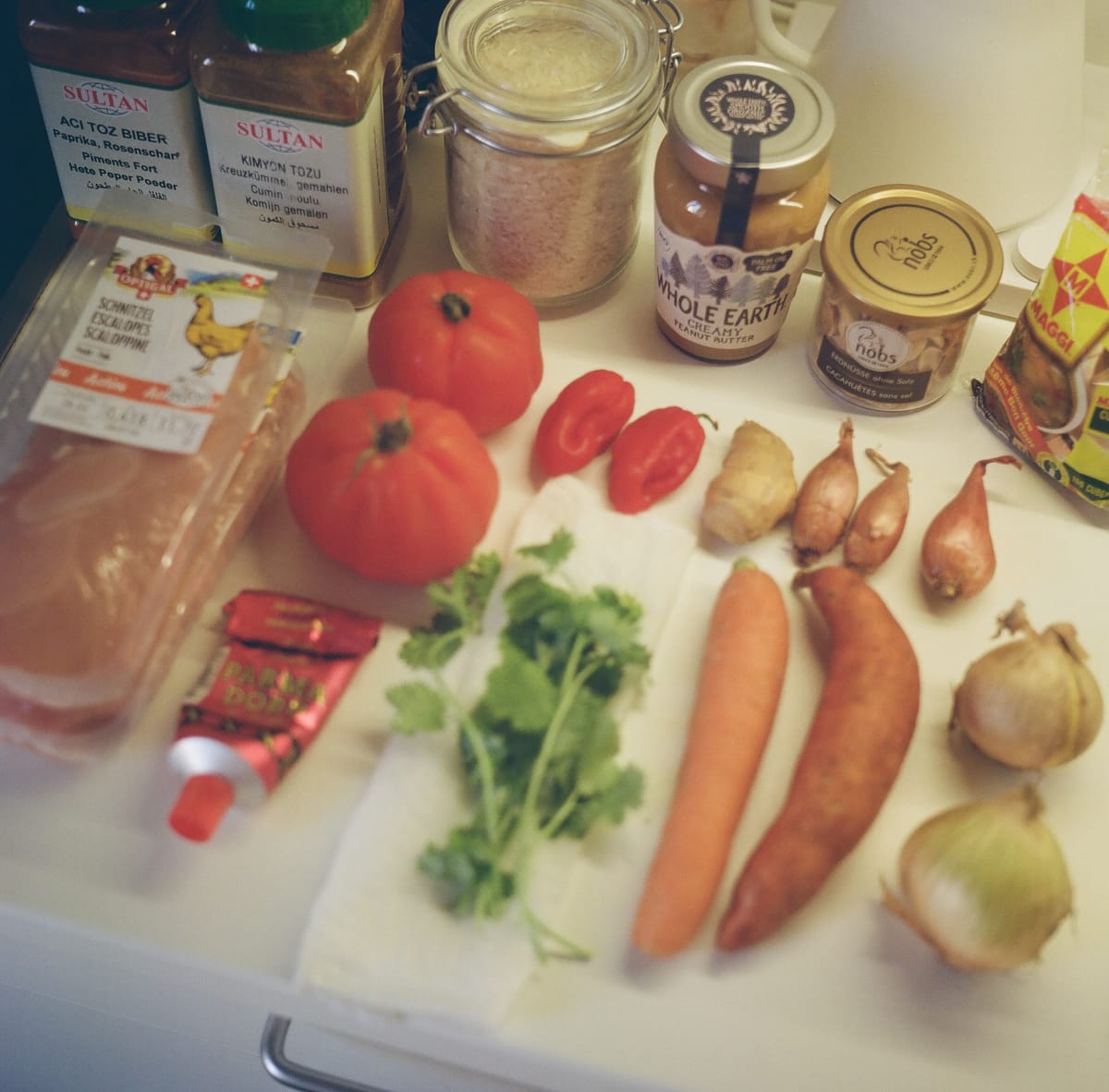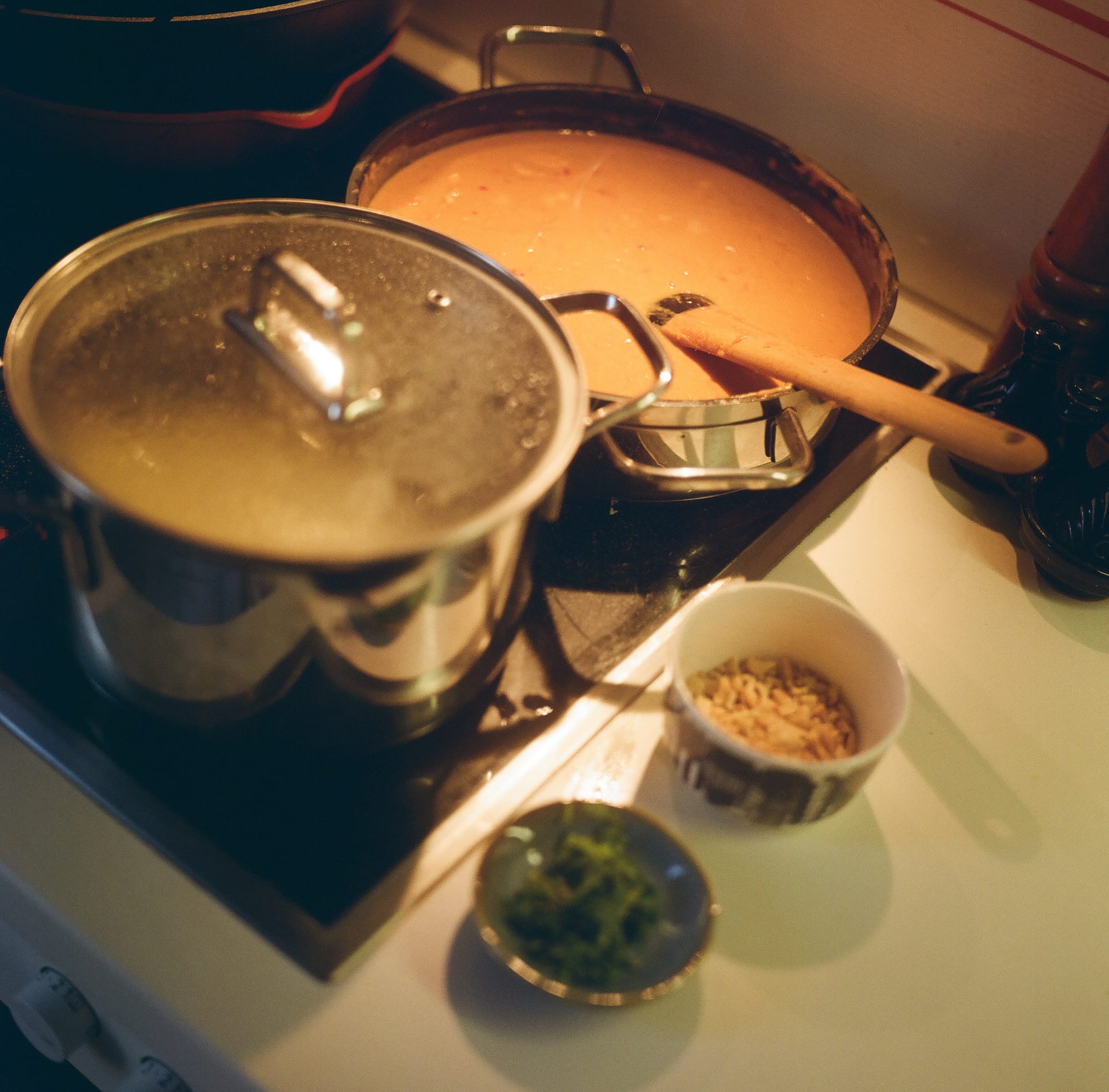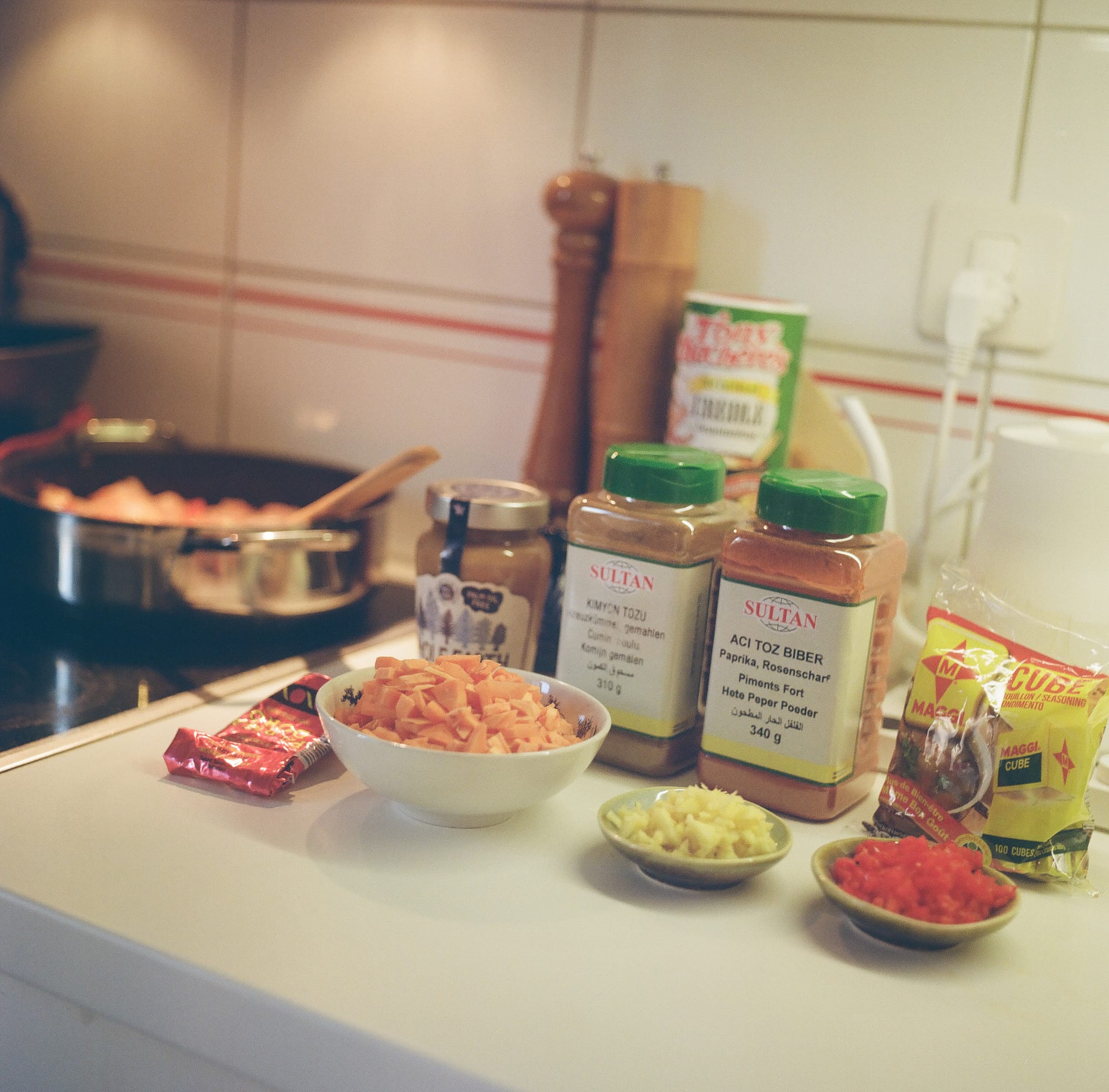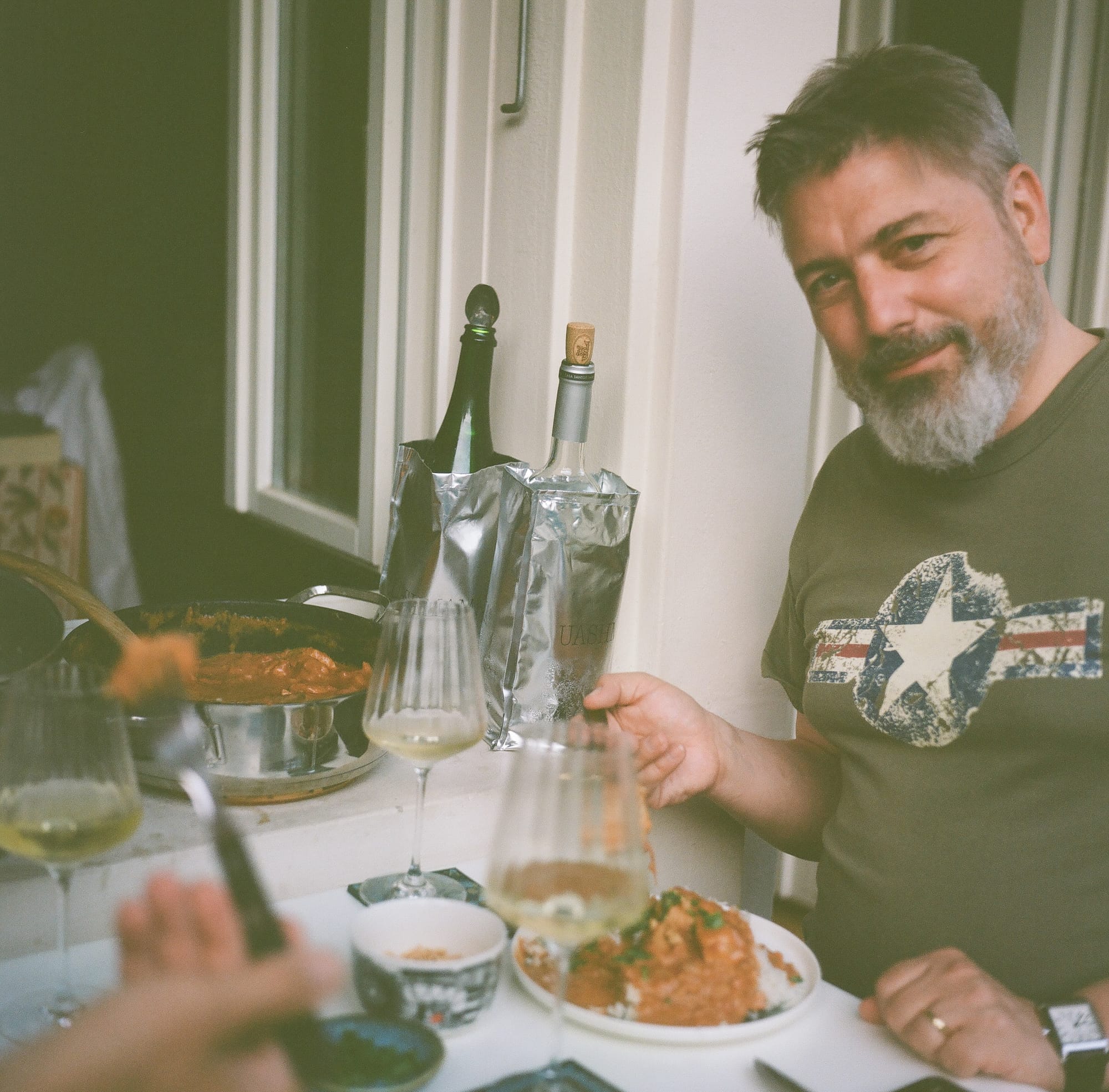What to eat THE GAMBIA 🇬🇲 Domoda
Peanuts are abundant in the narrow strip of land around the Gambia River... Peanuts, or more accurately peanut butter, is the star ingredient and dominant flavor in domoda, giving the dish its distinctive flavor and creamy texture.

Domoda
Published September 20, 2024 · by Amanda Rivkin Häsler
Domoda, the Gambian national dish, originates with the Mandinka tribe. The Mandinka are one of the West African country’s largest ethnic groups. Peanuts are abundant in the narrow strip of land around the Gambia River, an unusually fertile region in West Africa in a country that is the continent’s smallest (excluding island nations such as Cape Verde). Banjul, the capital, is located at the mouth where the river meets the Atlantic coastline.
Historically, cooking is a communal activity in the Gambia, and women would gather around a large pot as it simmers above an open fire, preparing meals for families and neighbors. The rich flavor of domoda is likely the result of these communal cooking sessions among families, friends and neighbors with the rust color complimenting the fork-tender chicken or beef at the core of the dish. As the Gambia is a majority Muslim nation, pork is not a thing.

Peanuts, or more accurately peanut butter, is the star ingredient and dominant flavor in domoda, giving the dish its distinctive flavor and creamy texture. Other essential ingredients include meat (chicken or beef), vegetables like okra, bitter tomato (known as garden egg), carrot and even sweet potato, onions, tomatoes, garlic, chili peppers for heat and occasionally lime juice for acidity.
Each ingredient in this rich riverbed stew plays a role in creating a palette that is harmonious and tangy. Peanut butter contributes a sweetness and savoriness while the peppers add heat, the meat a richness and the tomatoes a freshness.
In Senegal and Mali as well as at the Taste of Africa restaurant in Zürich we visited, domoda can be referred to as mafé. Some histories of the dish suggest the dish may have originated in Mali during colonial times and spread in an effort to increase production of ground nuts.
The official language of the Gambia is English due to British colonial rule, but other languages spoken include Mandinka, Pulaar, Wolof, Soninka, Jola, Fula, Manjak, Bainouk and Portuguese Creole. Like much of Africa, the borders are colonial which means they are not necessarily in line with lived experiences of the people of each nation-state.
One result of all this diversity and borders is that some versions of the dish alternatively known as domoda and mafé are more stew-like whereas other variations treat the peanut sauce as a sauce. In the Gambia, domoda is a sauce used by Gambians that is borrowed from Mandinka.

However, recipes promoted by official state organs in a country where one-third of the population lives below the international poverty line of $1.25 a day refer to a dish called domoda that is more stew-like. Traditionally, it is this version that can alternatively be called mafé that is served with rice and favored by Gambians and Senegalese.
Without question, variants of the dish alternatively known as domoda or mafé appear in the cuisines of West and Central Africans. In Ghana, for example, it is consumed with fufu, a starchy side dish consisting of cassava flour best eaten with the fingers. In Gambia, the economy is dominated by farming, fishing and tourism and rice is preferred.
The Gambia River was once essential in the slave trade as ships traveled down the river and to sea through Banjul. The legacy remains real and lived. In taking a people from a continent, the blood, sweat and tears of a nation finds new life elsewhere outside the body of the continent. But the acute poverty levels that enabled such destruction and remain after are not an impediment to the creativity and resourcefulness of a people left to largely fend off the land and little infrastructure.
Americans may know a limited amount about Gambia from mass culture and Alex Haley’s “The Roots”. Haley, whose narrative of one man, Kunta Kinte, who was sold into slavery at 17, is an outgrowth of Haley’s own explorations in his family’s past, which he traces back to the Gambia. The series had two successful runs on American television, first in 1977 and later as a remake that aired in 2016.
Like the Ukrainian flag which many more are familiar with due to Russia’s war of aggression, the Gambian flag is a reflection of the both fertile and unforgiving landscape of the Gambia. The red stripe at the top is symbolic of the harsh sun, the blue stripe in the middle represents the Gambia River and the green at bottom is the land, both forest and agriculture. The white stripes in between that bridge that Gambian tricolor stand for unity and peace. Another way to read the flag is politically, with representative colors most European will surely recognize. Red is the socialists, blue the democrats and green, the greens.

Recipe
Ingredients:
2 onions
3 shallots
Peanut oil
2 large tomatoes
Salt
4 chicken breasts
1 small carrot
1 small sweet potato
1 small piece of ginger
2 scotch bonnet or habanero peppers
340 grams or 1 cup of peanut butter
1 tablespoon tomato paste
1 Maggi bouillon cube
1 tablespoon hot paprika
1 tablespoon cumin
Half cup chopped peanuts (for garnish)
One bunch of chopped cilantro (for garnish)
Step 1: Dice onions and shallots and place in a pan with peanut oil on low heat for approximately 20 minutes.
Step 2: Dice two large tomatoes. Add to onions as they begin to get golden brown with a pinch of salt. Allow 3-5 minutes for tomatoes to soften.
Step 3: Cut chicken into strips about half an inch thick and an inch or so long. Add to onions and tomatoes.
Step 4: Peel carrot and sweet potato and chop into small pieces. Set aside for now. Likewise, peel ginger and chop into small pieces and scotch bonnet or habanero peppers and set aside.
Step 5: Add peanut butter and tomato paste once chicken is cooked on the outside.
Step 6: Add Maggi bouillon dissolved in 1 cup of water once peanut butter and tomato paste are consistent. Add chopped carrot, sweet potato, ginger and scotch bonnet or habanero pepper. Add paprika and cumin and stir.
Step 7: Stir periodically for 30-45 minutes.
Step 8: Serve with white rice. Garnish with chopped peanuts and cilantro.
Learn where to eat Gambian food in Switzerland.
Follow our social media pages @swissglobaldining on Instagram, TikTok and YouTube